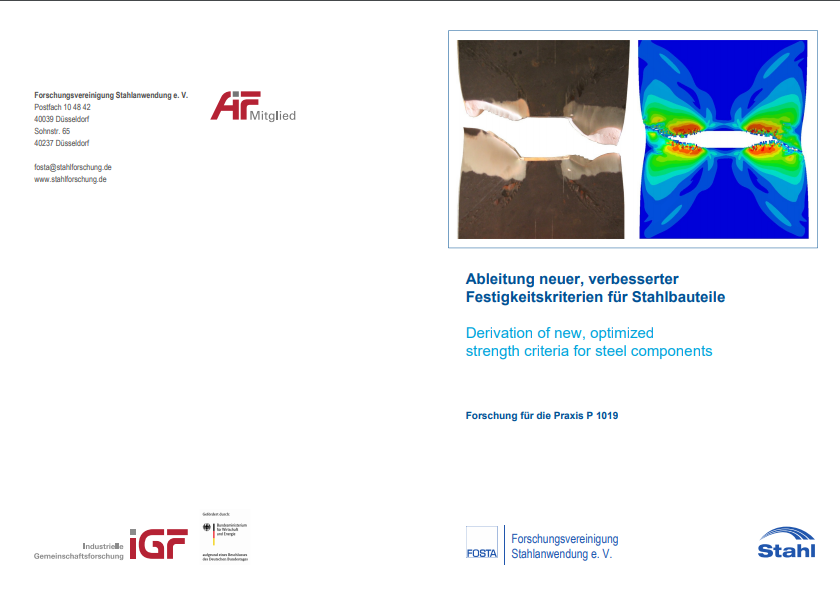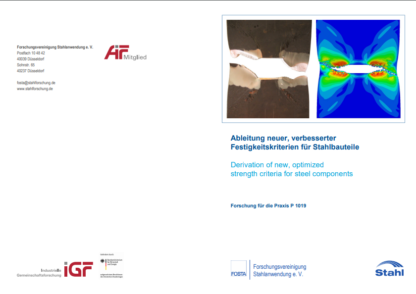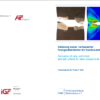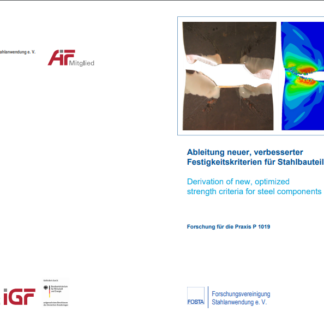Description
P 1019 – Derivation of new, optimized strength criteria for steel components
The design concepts implemented in the technical rules for steel structures were developed in order to cover the real bearing capacities of components. In general, the related design functions in such codes have been developed considering experimental tests and consist of phenomenological engineering models. As these engineering models predict the limits load in relation to the yield strength or the ultimate strength of the material, two consequences arise for the application of such resistance criteria:
(1) The prediction accuracy of the current resistance functions has shortcomings because the model concepts do not consider the real failure behaviour of the material. The present scatter mainly results from the non-consideration of the real fracture mechanism as well as the preceding damage history which both depend strongly on the actual toughness properties.
(2) The application of high strength steels and the exploitation of their performance capacity are significantly restricted because high-strength low-alloy (HSLA) steels gain their high yield strength at the expense of their uniform elongation. However, the steel standards specify minimum values of the uniform elongation or the yieldstrength ratio without considering the specific failure behaviour of high strength steels. Thus, HSLA-steels are excluded from most application without justification.
Yet, high strength steels offer economic and ecological benefits for the use in steel structures, for example by cost and energy savings combined with a reduced amount of material. Hence, the improvement of the current strength criteria is strongly desirable. In recent projects (FOSTA P 758 and FOSTA P 950) new safety factors for HSLA-steels to be applied in the design of pressure vessels have been derived by using new resistance criteria considering the associated ductility properties of the material. The crucial aspect of the methodology was an investigation of the real fracture mechanisms by means of damage mechanics. To this purpose the phenomenological BAI-WIERZBICKI-model (BW) was implemented as crack initiation criterion for the detection of failure. The corresponding damage loci were derived using the micromechanically motivated GURSON-TVERGAARD-NEEDLEMAN-model (GTN). However, the existing approach cannot be transferred to steel structures without adjustments.
Within this project the method has been adjusted for steel components. In addition, comprehensive experimental tests have been conducted to investigate the loadbearing capacity of modern structural steels. The experimental tests enable to analyse the actual bearing and fracture behaviour as well as the assessment of the EC3 design rules. By doing so a significant safety margin could be observed for some geometries and steel grades. Furthermore, the tests served to validate the damage model. It could be shown that the approach is generally able to predict the damage behaviour but due to the meshsize dependency certain obstacles exist to correlate the model parameters to material characteristics.
The research project (IGF-Nr. 17925 N) was carried out at Institut für Stahlbau, RWTH Aachen University und am Institut für Eisenhüttenkun-de, RWTH Aachen University. FOS-TA has accompanied the research project work and has organized the project funding from the Federal Ministry of Economics and Technology through the AiF as part of the programme for promoting industrial cooperation research (IGF) in accordance with a resolution of the German parliament.
Only available in german language.
Published in:
April 2019




